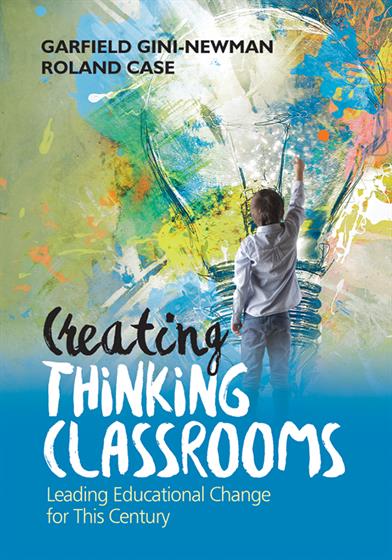Preface
About the Authors
PART I. UNDERSTAND THE ISSUES
Chapter 1. Opportunities and Challenges
Defining the Challenges
The Urgency to Improve
The Many Directions for Change
Three Potential Pitfalls
Three Promising Directions
Concluding Thoughts
Notes
PART II. REORIENT THE FOUNDATIONS: WHY THINKING IS AT THE HEART OF MEANINGFUL LEARNING
Chapter 2. Thinking Is the Key
Basic Orientations to Teaching and Learning
Alternative Sources of Curriculum Content
Differing Views of Student Learning
Contrasting Roles for Teachers
Implications for an Inquiry Unit
Concluding Thoughts
Notes
Chapter 3. Critical, Creative, and Collaborative Dimensions of Thinking
The Power of an Integrated Approach to Thinking
The Critical Dimension
The Creative Dimension
The Collaborative Dimension
Concluding Thoughts
Note
Chapter 4. A Framework for Nurturing Thinking Classrooms
A Comprehensive Approach to Implementation
Shape Climate to Support Thinking
Create Opportunities for Thinking
Build Capacity for Thinking
Provide Guidance That Informs Thinking
Concluding Thoughts
Note
PART III. REFOCUS THE GOALS: WHAT SCHOOLS MUST ACHIEVE TO BETTER PREPARE STUDENTS
Chapter 5. From Knowledge to Deep Understanding
What Does It Mean to Understand Deeply?
Why Do We Have This Problem?
Why Is Teaching for Deep Understanding Important?
What Practices Nurture Deep Understanding?
Concluding Thoughts
Note
Chapter 6. From Skill to Real-Life Competency
What Is Meant by Real-Life Competencies?
Why Are Students Not Better Prepared?
What Practices Nurture Real-Life Competence?
Concluding Thoughts
Notes
Chapter 7. From Attitude to Genuine Commitment
What Do We Mean by Genuine Commitment?
Why Is Teaching for Genuine Commitment Important?
What Practices Nurture Genuine Commitment?
Concluding Thoughts
Notes
PART IV. ALIGN WITH GUIDING PRINCIPLES: HOW TEACHERS CAN BEST SUPPORT 21ST CENTURY LEARNING
Chapter 8. Engage Students
What Does Engaging Students Mean?
Why Is It Important to Engage Students Beyond Compliance and Mere Interest?
What Practices Support Educational Engagement?
Concluding Thoughts
Notes
Chapter 9. Sustain Inquiry
What Is Sustained Inquiry?
Why Is It Important to Sustain Inquiry?
What Practices Promote Sustained Inquiry?
Concluding Thoughts
Notes
Chapter 10. Nurture Self-Regulated Learners
What Is Self-Regulated Learning?
Why Is Self-Regulated Learning Important?
What Practices Nurture Self-Regulated Learners?
Concluding Thoughts
Notes
Chapter 11. Create Assessment-Rich Learning
What’s Wrong With the Current Assessment Landscape?
What Is Assessment-Rich Learning?
Why Is Assessment-Rich Learning Important?
What Practices Support Assessment-Rich Learning?
Concluding Thoughts
Chapter 12. Enhance Learning Through Digital Technology
What Is Digitally Enhanced Learning?
Why Is Digitally Enhanced Learning Important?
Concluding Thoughts
Note
PART V. SUPPORT TEACHER GROWTH
Chapter 13. Leading a Renovation, Not a Revolution
Why Think Renovation?
How to Lead an Educational Renovation
What Practices Support Coherent, Comprehensive, and Continuous Professional Inquiry?
Concluding Thoughts
Notes
References
Index



